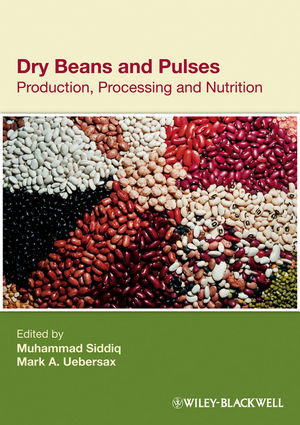

Most ebook files are in PDF format, so you can easily read them using various software such as Foxit Reader or directly on the Google Chrome browser.
Some ebook files are released by publishers in other formats such as .awz, .mobi, .epub, .fb2, etc. You may need to install specific software to read these formats on mobile/PC, such as Calibre.
Please read the tutorial at this link: https://ebookbell.com/faq
We offer FREE conversion to the popular formats you request; however, this may take some time. Therefore, right after payment, please email us, and we will try to provide the service as quickly as possible.
For some exceptional file formats or broken links (if any), please refrain from opening any disputes. Instead, email us first, and we will try to assist within a maximum of 6 hours.
EbookBell Team

0.0
0 reviewsThe common beans and pulses are diverse food resources of high nutritional value (protein, energy, fiber and vitamins and minerals) with broad social acceptance. These legume crops demonstrate global adaptability, genotypic and phenotypic diversity, and multiple means of preparation and dietary use. Beans and pulses are produced in regions as diverse as Latin America, Africa, Asia, and North America, and on a scale similar to some other crops, such as wheat, corn, rice and soybeans.
Numerous factors influence utilization, including bean type and cultivar selection, cropping environment and systems, storage conditions and handling infrastructure, processing and final product preparation. Nutrient content and bio-availability are dramatically influenced by these conditions. In recent years, beans and pulses have been cited for imparting specific positive health potentiating responses, such as hypocholesteremic response, mitigation of diabetes and colonic cancer, and weight control. Enhanced dry bean utilization focused on improved dietary health is an opportunity within both subsistent and developed populations.
This book provides a contemporary source of information that brings together current knowledge and practices in the value chain of beans/pulses production, processing, and nutrition. It provides in-depth coverage of a wide variety of pertinent topics including: breeding, postharvest technologies, composition, processing technologies, food safety, quality, nutrition, and significance in human health. An experienced team of over 25 contributors from North America, Asia, and Africa has written 15 chapters, divided into three sections:
Contributors come from a field of diverse disciplines, including crop sciences, food science and technology, food biochemistry, food engineering, nutritional sciences, and culinology.Dry Beans and Pulses Production, Processing and Nutrition is an essential resource for scientists, processors and nutritionists, whatever the work setting.
Content: